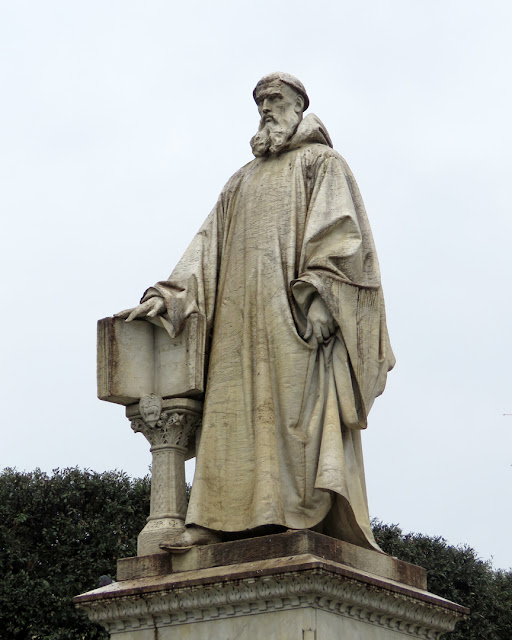Sunday, November 21, 2021
Guido of Arezzo
Guido of Arezzo (Guido Monaco) by Salvino Salvini, 1882
Piazza Guido Monaco
Arezzo, February 2021
“Guido of Arezzo (c. 991 – after 1033) was an Italian music theorist and pedagogue of the medieval era. He is regarded as the inventor of modern staff notation that replaced neumatic notation. His text, the Micrologus, was the second most widely distributed treatise on music in the Middle Ages (after the writings of Boethius). Guido was a Benedictine monk from the Italian city-state of Arezzo. Recent research has dated his Micrologus to 1025 or 1026; since Guido stated in a letter that he was thirty-four when he wrote it, his birthdate is presumed to be around 991 or 992. His early career was spent at the monastery of Pomposa, on the Adriatic coast near Ferrara. While there, he noted the difficulty that singers had in remembering Gregorian chants. He came up with a method for teaching the singers to learn chants in a short time, and quickly became famous throughout north Italy. However, around 1025 he attracted the hostility of the other monks at the abbey who resisted his musical innovations, prompting him to move to Arezzo, a town which had no abbey, but which did have a large group of cathedral singers, whose training Bishop Tedald invited him to conduct.” (Guido of Arezzo, Wikipedia)
Subscribe to:
Post Comments (Atom)


No comments:
Post a Comment